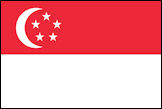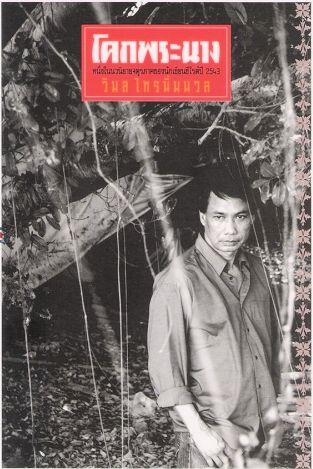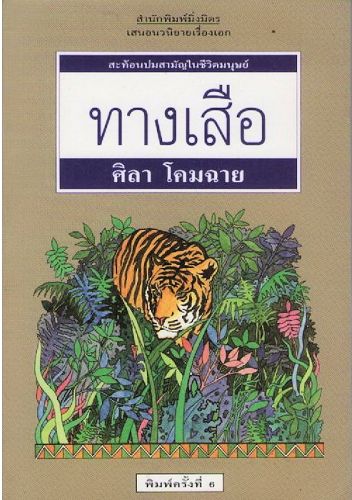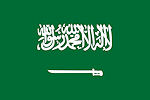

Zitierweise / cite as:
Payer, Alois <1944 - >: Chronik Thailands = กาลานุกรมสยามประเทศไทย. -- Chronik 1989 / B. E. 2532. -- 1. undatiert. -- Fassung vom 2017-03-19. -- URL: http://www.payer.de/thailandchronik/chronik1989a.htm
Erstmals publiziert: 2012-10-12
Überarbeitungen: 2017-03-19 [Ergänzungen] ; 2016-11-29 [Ergänzungen] ; 2016-11-14 [Ergänzungen] ; 2016-05-13 [Ergänzungen] ; 2016-03-22 [Ergänzungen] ; 2016-02-21 [Ergänzungen] ; 2016-01-11 [Ergänzungen] ; 2015-08-25 [Ergänzungen] ; 2015-05-25 [Ergänzungen] ; 2015-04-27 [Ergänzungen] ; 2015-04-19 [Ergänzungen] ; 2015-04-10 [Ergänzungen] ; 2014-11-20 [Ergänzungen] ; 2014-10-09 [Ergänzungen] ; 2014-09-21 [Ergänzungen] ; 2014-09-09 [Ergänzungen] ; 2014-04-11 [Ergänzungen] ; 2014-03-19 [Ergänzungen] ; 2013-05-02 [Ergänzungen] ; 2013-04-26 [Teilung des Jahrgangs] ; 2013-04-15 [Ergänzungen] ; 2013-04-11 [Ergänzungen] ; 2013-04-06 [Ergänzungen] ; 2013-03-30 [Ergänzungen] ; 2013-03-09 [Ergänzungen] ; 2013-01-25 [Ergänzungen] ; 2013-01-13 [Ergänzungen]
©opyright: Dieser Text steht der Allgemeinheit zur Verfügung. Eine Verwertung in Publikationen, die über übliche Zitate hinausgeht, bedarf der ausdrücklichen Genehmigung des Herausgebers.
Dieser Text ist Teil der Abteilung
Thailand von
Tüpfli's Global Village Library
ช้างตายทั้งตัวเอาใบบัวปิดไม่มิด
|
Gewidmet meiner lieben Frau Margarete Payer die seit unserem ersten Besuch in Thailand 1974 mit mir die Liebe zu den und die Sorge um die Bewohner Thailands teilt. |
|
Bei thailändischen Statistiken muss man mit allen Fehlerquellen rechnen, die in folgendem Werk beschrieben sind:
Die Statistikdiagramme geben also meistens eher qualitative als korrekte quantitative Beziehungen wieder.
|
Statistische Daten 1989:
|
1970 - 1989
Bevölkerungsentwicklung einiger Provinzhauptstädte:
Abb.: Bevölkerungsentwicklung von Chiang Mai (เชียงใหม่), Nakhon Ratchasima (นครราชสีมา), Khon Kaen (ขอนแก่น) und Hat Yai (หาดใหญ่) 1970 - 1989
[Datenquelle: Länderbericht Thailand 1993, S. 35]
1989 - 2011
Entwicklung der Weltmarktpreise für Thai-Reis
Abb.: Durchschnittlicher Jahrespreis (US$/Tonne) für White Broken Rice, Thai A1 Super, f.o.b Bangkok (Wednesday) 1989 - 2011
[Datenquelle: Jackson Son & Co. (London) Ltd. / FAO]
1987 - 2011
Mitarbeit im Familienbetrieb
Abb.: Prozentsatz der Berufstätigen, die im Familienbetrieb arbeiten, 1987 - 2011
[Datenquelle: http://www.indexmundi.com/facts/thailand/contributing-family-workers. -- Zugriff am 2014-04-08]
1989
Gründung der Suranaree Industrial Zone (เขตอุตสาหกรรมสุรนารี) in Nakhon Ratchasima (นครราชสีมา)
Abb.: Lage von Nakhon Ratchasima (นครราชสีมา)
[Bildquelle: OpenStreetMap. -- Creative Commons Lizenz (Namensnennung, share alike)]
1986 - 1996

Japanische Direktinvestitionen in Thailand:
Abb.: Japanische Direktinvestitionen in Thailand (in Mio. US-$), 1986 - 1996
[Datenquelle: Bello (1998), S. 65]
1989
Sprachen in Thailand (1989, Schätzung):
Abb.: Sprachgruppen in Thailand, 1974
[Bildquelle: CIA. -- http://www.lib.utexas.edu/maps/middle_east_and_asia/thailand_1974_ethnic_groups.jpg. -- Zugriff am 2012-02-06. -- Public domain]Sprachen mit über 1 Mio. Sprechern in Thailand:
Abb.: Sprachen mit über 1 Mio. Sprechern in Thailand (geschätzt), 1989
[Datenquelle: Smalley (1994), S. 369]
Abb.: Aufschrift in Lao (ລາວ), Ubon Ratchathani (อุบลราชธานี), 2011
[Bildquelle: Xiengyod / Wikimedia. -- GNU FDLicense]
Abb.: Lage von Ubon Ratchathani (อุบลราชธานี)
[Bildquelle: OpenStreetMap. -- Creative Commons Lizenz (Namensnennung, share alike)]Sprachen mit zwischen 100.000 und 1 Mio. Sprechern in Thailand:
Abb.: Sprachen mit zwischen 100.000 und 1 Mio. Sprechern in Thailand (geschätzt), 1989
[Datenquelle: Smalley (1994), S. 369]
Abb.: Chinesischer Friedhof, Kanchanaburi (กาญจนบุรี), 2007
[Bildquelle: Mathieu Fortin. -- http://www.flickr.com/photos/fortinmat/2300327520/. -- Zugriff am 2012-02-06. -- Creative Commons Lizenz (Namensnennung, keine kommerzielle Nutzung, share alike)]
Abb.: Lage von Kanchanaburi (กาญจนบุรี)
[Bildquelle: OpenStreetMap. -- Creative Commons Lizenz (Namensnennung, share alike)]Sprachen mit zwischen 10.000 und 100.000 Sprechern in Thailand:
Abb.: Sprachen mit zwischen 10.000 und 100.000 Sprechern in Thailand (geschätzt), 1989
[Datenquelle: Smalley (1994), S. 369f.]
Abb.: Hmong (ม้ง), Thailand, 1982
[Bildquelle: mksfca. -- http://www.flickr.com/photos/mksfca/4211685660/. -- Zugriff am 2012-02-06. -- Creative Commons Lizenz (Namensnennung, keine kommerzielle Nutzung, keine Bearbeitung)]Sprachen mit zwischen 1000 und 10.000 Sprechern in Thailand:
Abb.: Sprachen mit zwischen 1.000 und 10.000 Sprechern in Thailand (geschätzt), 1989
[Datenquelle: Smalley (1994), S. 370.]
Abb.: Indisches Geisterhäuschen, Thailand, 2010
[Bildquelle: Hanumann. -- http://www.flickr.com/photos/40883475@N00/4274104864/. -- Zugriff am 2012-02-06. -- Creative Commons Lizenz (Namensnennung)]Sprachen mit unter 1000 Sprechern in Thailand:
Abb.: Sprachen mit unter 1000 Sprechern in Thailand (geschätzt), 1989
[Datenquelle: Smalley (1994), S. 370.]
Abb.: Moken (มอเกน / ชาวเล), Surin Islands (หมู่เกาะสุรินทร์), Provinz Phang Nga (พังงา)
[Bildquelle: Ronnakorn Potisuwan / Wikipedia. -- GNU FDLicense]
Abb.: Lage der Surin Islands (หมู่เกาะสุรินทร์)
[Bildquelle: OpenStreetMap. -- Creative Commons Lizenz (Namensnennung, share alike)]
1989
Management Staff von Entwicklungsprogrammen für Bergvölker (Tribals)
Abb.: Ethnische Zugehörigkeit des Management Staff von Thai triball development projects, 1989
[Datenquelle: Kampe, Ken. -- In: Development or domestication? : indigenous peoples of Southeast Asia / ed. Don N McCaskill ; Ken Kampe. -- Chiang Mai : Silkworm Books, 1997. -- 631 S. : Ill. ; 21 cm. -- ISBN 974-7100-33-9. -- S. 138]
198x
Ende 1980er Jahre: Fertigstellung der Nationalstraße Tak (ตาก) - Mae Sot (แม่สอด) (heute: Route 105)
Abb.: Tak (ตาก) - Mae Sot (แม่สอด)
[Bildquelle: CIA. -- Public domain]
1989
Chiang Mai (เชียงใหม่): Der Bau von 10 neuen Wohnhochhäusern ruft mannigfachen Protest hervor:
- Gründe des Umweltschutzes
- Soziale Bedenken
- Weltliche Bauten sollen nicht höher sein als religiöse
- Missachtung von Geistern
- u.ä.
1977 - 1989
Von der Zensur freigegebene inländische und ausländische Filme
Abb.: Anzahl der von der Zensur freigegeben Filme 1977 - 1989
[Datenquelle: Luces de Siam : una introducción al cine tailandés / Alberto Elena [1958 - 2014] (ed.). -- Madrid : T&B, 2006. -- 395 S. : Ill. -- ISBN 84-96576-11-6. -- S. 107]
1989
Preis für thailändisches Heroin (Grade 4) an verschiedenen Orten:
Abb.: Preis für 1kg thailändisches Heroin (Grade 4) in verschiedenen Regionen Thailands sowie in Malaysia, Hong Kong und USA, 1989
[Datenquelle: Guns, girls ... (1998), S. 93]
Abb.: Der Rohstoff für Heroin: Latex des Schlafmohns (Papaver somniferum L.), Thailand, 2007
[Bildquelle: Rob Rogoyski. -- http://www.flickr.com/photos/rogoyski/2188262071/. -- Zugriff am 2012-02-11. -- Creative Commons Lizenz (Namensnennung, keine kommerzielle Nutzung, keine Bearbeitung)]
1989
Eine Tom (ทอม) zur Bezeichnung Lesbian (เลสเบียน) für Toms:
"A‘Lesbian,’ huh? It’s disgusting (kliat ca taai) [เกลียด], like "hysterical" people (phuak hysteria) [พวกฮิสทีเรีย],I am a tom [ทอม], and my partner is a dee [ดี้].Lesbians are like women who sleep with women and can sleep with men. They care just about sex, but toms and dees care about feelings." [Übersetzt in: Sinnott, Megan J.: Toms and dees : transgender identity and female same-sex relationships in Thailand. -- Honolulu : University of Hawaii Pr., 2004. -- 261 S. : Ill. ; 24 cm. -- ISBN 0824828526. -- Zugl. Diss., Univ. of Wisconsin - Madison, 2002. -- S. 30]
1989
Suphan Buri (สุพรรณบุรี): Banharn Silpa-archa (บรรหาร ศิลปอาชา, 1932 - ) gründet mit der Stiftung von 5 Mio. Baht das Banharn-Jamsai Polytechnic college (วิทยาลัยสารพัดช่างบรรหาร-แจ่มใส)
Abb.: Lage von Suphan Buri (สุพรรณบุรี)
[Bildquelle: OpenStreetMap. -- Creative Commons Lizenz (Namensnennung, share alike)]
1989
Gründung von DTAC (Total Access Communication Public Company Limited).
Abb.: ®Logo
"DTAC (Total Access Communication Public Company Limited) ist der zweitgrößte Mobilfunkanbieter in Thailand und gehört zur Telenor-Gruppe. Die Gründung des Unternehmens erfolgte 1989. Das Marktkapital liegt bei etwas mehr als 100 Milliarden Baht[1]. DTAC bietet neben GSM und GPRS auch EDGE und AMPS an. Roaming-Abkommen sind mit 147 Ländern abgeschlossen worden.
Ende 2009 hatte DTAC (im Logo als dtac geschrieben) mit 19,7 Millionen Kunden rund 30 % Marktanteil im thailändischen Mobilfunkmarkt[2]. Geschäftsführer ist der Norweger Tore Johnsen. Das Geschäftsjahr endet mit dem 31. Dezember. Die Bilanzprüfungen werden von Ernst & Young durchgeführt."
[Quelle: http://de.wikipedia.org/wiki/DTAC. -- Zugriff am 2012-06-07]
1989
Gründung des Museum of Counterfeit Goods in Bangkok. Da Thailand ein Paradies für gefälschte Produkte ist, fehlt es nicht an Ausstellungsstücken.
1989
Es erscheinen die beiden ersten Alben von Jintara Poonlarp (จินตหรา พูนลาภ, 1971 - ). Die Songs sind von สรเพชร ภิญโญ [Soraphet Phinyo] <1950 - >:
- ถูกหลอกออกโรงเรียน ["Tricked out of school"]
- วานเพื่อนเขียนจดหมาย [Bitte einen Freund, einen Brief zu schreiben]
Künstlerlink auf Spotify:
URI: spotify:artist:3KlfbBoTPmF2TwJxFzveRI
URL: https://open.spotify.com/artist/3KlfbBoTPmF2TwJxFzveRI
Abb.: Cover von Album 2
[Bildquelle: Wikipedia. -- Fair use]Video: Song aus dem Album พลังรัก von Jintara Poonlarp (จินตหรา พูนลาภ)
[Quelle der mp4-Datei: กุมารน้อย สุขภาพดี. -- https://www.youtube.com/watch?v=hfPXc5HTeIU. -- Zugriff am 2014-03-19. -- Creative Commons Lizenz (Namensnennung)]
"Jintara Poonlarp oder Poonlab (Thai จินตหรา พูนลาภ; * 12. März 1971 in Moo Baan Chantun, Bezirk Kaset Wisai (เกษตรวิสัย), Provinz Roi Et (ร้อยเอ็ด), Thailand) ist eine der bekanntesten Mor Lam (หมอลำ) und Luk Thung (ลูกทุ่ง) Sängerinnen in Thailand. Ihr Geburtsname war Tongbai Janlueang aber sie änderte ihn zu Tongbai Poonlarp als ihre Eltern ihre Ehe registrieren ließen. Jintara ist ihr Künstlername. Sie ist auch unter ihren Spitznamen Jin oder Sao Sieng Pin (Thai สาวเสียงพิณ) bekannt. Der zweite Name bedeutet Mädchen mit der Stimme einer Isaan-Gitarre (Phin). Bis Mai 2005 veröffentlichte sie 36 eigene Alben sowie viele Zusammenstellungen. Sie hat etwa gleich viel Mor Lam und Luk Thung aufgenommen. Zwei ihrer bekanntesten Hits, Ma Tammai und Faen Ja, nahm sie mit Bird Thongchai McIntyre (ธงไชย แมคอินไตย์) auf. Karriere
Jintara wurde am 12. März 1971 im Dorf Moo Baan Chanthun, Bezirk Kaset Wisai, Provinz Roi Et in der Region Isaan (อีสาน) in Thailand geboren. Schon als Kind sang sie gerne. Die anderen Dorfbewohner lobten ihre Stimme und bestärkten sie, Sängerin zu werden.
Mit 15 schloss sie sich der Theatergruppe Mek Khala in ihrer Heimatprovinz Roi Et an. Einige Zeit später nahm sie am Gesangswettbewerb anlässlich des alljährlichen Seidenfests in Khon Kaen (ขอนแก่น) teil. Ein DJ erkannte ihr Talent und stellte die Verbindung zu Grammy Music her.
Mit ihrer Liveshow ist sie jedes Jahr von September bis Mai unterwegs und hatte schon Auftritte in der Schweiz, Deutschland, USA, Hongkong, Kanada und Singapur. Jintara hat eine raue und schrille Stimme. Ihre Musik hat starke Einflüsse aus der Popmusik und wird hauptsächlich mit westlichen Instrumente gespielt. In den meisten Videos tragen Jintara und ihre Tänzerinnen moderne westliche Kleidung.
Einer ihrer bekanntesten Lieder ist Sao Isaan Plat Tin (สาวอีสานพลัดถิ่น; Isaan Mädchen arm und weit von zu Hause weg, Album 9). Es ist ein Lied über die typischen Themen Armut, Heimweh und einen untreuen Liebhaber. Im Jahr 2003 haben Moralwächter des thailändischen Kulturministeriums geplant, ihr Lied Tränen der Frau eines Leutnants (Namta Mia Nairoi) in den staatlichen Medien zu verbieten. [1]
Ihre erste Rolle als Schauspielerin hatte sie im Jahr 2001 in der Fernsehserie Nai Hoy Tamin. Dies war eine Luk Thung-Serie, die das Leben der Menschen im Isaan in früheren Zeiten darstellte.
Beim MTV Asia Award am 14. Februar 2004 im Singapore Indoor Stadium trat sie als Begleitsängerin von Bird Thongchai McIntyre auf."
[Quelle: http://de.wikipedia.org/wiki/Jintara_Poonlarp. -- Zugriff am 2011-11-14]
1989

Es erscheint der Song
บุญชู บัวผาง [Bunchu Buaphang]: สิงคโปร์ ["Singapur"] in der Audiokassette ทำยมือ ["Handgemacht"]Künstlerlink auf Spotify:
URI: spotify:artist:2FooyAeUMAOdJIracXFYeB
URL: https://open.spotify.com/artist/2FooyAeUMAOdJIracXFYeB
Abb.: Cover einer späteren CD mit anderen Songs

Chiranan Pitpreecha (จิระนันท์ พิตรปรีชา = จิระนันท์ ประเสริฐกุล) erhält den Southeast Asian Writers Award
Abb.: Chiranan Pitpreecha (จิระนันท์ พิตรปรีชา), 2009
[Bildquelle: The Official Site of The Prime Minister of Thailand Photo by พีรพัฒน์ วิมลรังครัตน์. -- https://www.flickr.com/photos/40561337@N07/3911053684/. -- Zugriff am 2015-05-25. -- Creative Commons Lizenz (Namensnennung)]
1989
Es erscheint der Roman โคกพระนาง von วิมล ไทรนิ่มนวล (1955 - )

Abb.:
Einbandtitel
Englische Übersetzung: Wimon Sainimnuan [วิมล ไทรนิ่มนวล] <1955 - >: Khoak Phranang. -- Transl. by Marcel Barang. -- Internet edition [for Kindle]. -- 2009. -- ISBN 97 8611 7107 238. -- Originaltitel: โคกพระนาง (1989)
1989
Es erscheint der Roman ทางเสือ von ศิลา โคมฉาย (1952 - )

Abb.:
Einbandtitel
Englische Übersetzung: Sila Komchai [ศิลา โคมฉาย] <1952 - >: The path of the tiger. -- Transl. by Marcel Barang. -- Internet edition [for Kindle]. -- 2009. -- (Thai modern classics). -- ISBN 97 8611 7107 009. -- Originaltitel: ทางเสือ (1989)
1989
Es erscheint:
เสกสรรค์ ประเสริฐกุล [Seksan Prasertkul] <1949 - >: เดินป่าเสาะหาชีวิตจริง : บันทึกแห่งชีวิต จากวันคืนสู่ราวไพร ถึงคืนวันกลับนาคร. -- กรุงเทพฯ : กำแพง, 2532. -- 120 S. -- ["A jungle trek in search of authentic life : memoirs of life from th day when I left for the jungle to the day when I returned to Bangkok"]
Abb.: Einbandtitel
1989

Es erscheint auf Englisch:
Yayori Matsui [松井やより] <1934 - 2002>: Women's Asia. -- London : Zed, 1989. -- 172 S. : Ill. ; 22 cm. -- ISBN 0862328276. -- Originaltitel: アジアの女たち (1987)
Abb.: Einbandtitel

" I went to a young Thai woman’s funeral at one of the largest funeral halls in Hamburg, West Germany. Only twenty years old, she committed suicide by jumping from her eighth-floor apartment. She had been married to a German sailor whom she met in a Bangkok bar, and went to live in West Germany. But, her husband was a pimp and forced her into prostitution to earn extra money. When she met another man who offered her a better and more secure life, and helped her to get out of prostitution, she divorced her husband and married this man. He required that she be a good wife and restricted her freedom so that she was unable to earn extra money to send to her poor family in Thailand. This was a tragedy of an unfortunate woman who had to make a hard choice between the two roles of Eve [prostitute] and Mary [pure mother].
This tragic example of the death of a migrant woman was reported in an American magazine by Siriporn Skrobanek [ศิริพร สะโครบาเนค], Director of the Women’s Information Center in Bangkok. After graduation from Chulalongkorn University [จุฬาลงกรณ์มหาวิทยาลัย] in Bangkok, she earned a Master’s degree at the Institute of Social Studies in the Netherlands with a dissertation on prostitution.
In October [richtig Januar] 1981, she joined the campaign against sex tourism and demonstrated with other women when the then Prime Minister Suzuki [Suzuki Zenkō - 鈴木 善幸, 1911 - 2004] of Japan was visiting ASEAN countries; this led to her involvement in the prostitution issue. She was also inspired by the
joint efforts of Japanese and Filipino women in the struggle against sex tourism. By 1986 she had established a centre in a three-storey building and her work there is supported by Western non-governmental organizations.Siriporn works as a resource person for various conferences in Asia related to the subject of prostitution, and has attended many international meetings on women’s issues. Her sharp intelligence masked by her gentle smile, she is to all appearances a typical Thai woman. But, once she speaks, she is a forceful advocate for women’s rights and for the independence of prostitutes. At present her efforts are aimed particularly at two types of migrant Thai women: as she expresses it,
‘One is the prostitute Eve; the other is the bride Mary. ’
Two types of women; two kinds of problems.
In Thailand there are too many prostitutes and the competition is fierce. It is very difficult to earn enough money to support a large family. More and more women want to travel overseas to earn a higher income; they want to go to the developed countries where the standard of living is higher. They generally do this by making contact with a sex-tour customer, or contract for marriage with a catalogue agent. Many women who follow this latter route become victims of sexual exploitation just like the young woman who committed suicide in West Germany.
Siriporn interviewed Thai women living in and near West Germany, and she thought it very important to inform women who were planning to migrate of the dangerous pitfalls ahead. The centre also has many cases of women seeking counselling on other issues as well; for example, problems of rape, pornography, family violence - any form of behaviour or activity that dehumanizes women.
The structure of Thai prostitution is very complicated. It begins with children in the teahouses, expands to Patpong Street [พัฒน์พงษ์], Pattaya Beach [พัทยา], and Phuket Island [เกาะภูเก็ต], then overseas. In order to deal with the problems generated by these types of prostitution different kinds of support systems are needed. Khunying Kanitha’s [Wichiencharoen - ณหญิง กนิษฐา วิเชียรเจริญ, 1920 - 2002] Emergency Home, Chantawipa’s [Apisuk - จุมพล อภิสุข] Empower group [Education Means Protection Of Women Engaged in Recreation, มูลนิธิส่งเสริมโอกาสผู้หญิง], and Siriporn’s Women’s Information Center are all actively involved in addressing these problems.
The patterns of structural economic dependence forced on developing countries result in impoverishment in agricultural communities. Peasant families are, in turn, forced into traditional patriarchal patterns of sacrificing their daughters to provide for large families. These two factors, combined with a growing tourist industry, have caused an explosive increase in prostitution. Women born into these poverty-stricken families have few alternatives. They either become low-wage or informal sector workers such as street vendors, or work in the sex industry within the country or abroad.
Parents sell their daughters to an agent; the agent makes huge profits and pays off the police. Everyone knows this. Child prostitution is against the law but trafficking in young girls is widely practised. The agent is never prosecuted and the girl is the one who is punished.
Thus lecturer Teeranat Karnjanaukson of Chulalongkorn University criticizes those who profit from child prostitution. A member of Friends of Women, she helped organize the Anti-Trafficking Women Week campaign as part of the International Women’s Day observance after the Phuket Island fire.
The women activists, lawyers, teachers, doctors, farmers - all those involved in this campaign, produced a statement saying:
We should do away with the present anti-prostitution law that punishes only the victim; we should enforce the criminal law that prohibits anyone from forcing persons under eighteen years of age into prostitution; and we should punish the agents that violate these laws.
Today in Thailand, more and more voices are being raised against punishment of prostitutes and for decriminalization.
An anti-prostitution law cannot change overnight the situation of thousands of women working in the sex industry. It is obvious that the political and economic system must be changed, but this will take a long time. We cannot wait. Our urgent task is to give these women day-to-day support so that they can do their business without police interference and survive.
This point has been made for years by the woman journalist Sukanya Hantrakul [สุกัญญา หาญตระกูล]. It has now become the consensus of activists in the women’s liberation movement who are dealing with the issue of prostitution in Thailand.
It seems to me that the reasoning behind this consensus is that there is little possibility of immediate structural change in Thai society. The people’s movement for democracy that began with the student revolution in 1973 lasted only three years, and was brutally suppressed by the Thai army in 1976 on what has become known as Bloody Wednesday."
[a.a.O., S. 67ff. -- Fair use]
1989

Das International Program on Rice Biotechnology (IPRB) der Rockefeller Foundation beginnt seine Arbeit in Thailand.
1989

Beobachtungen einer Thai-Studentin in den USA:
"A glimpse of the university-level educational systems in Thailand and the U. S. is provided by Paveena Viriyaprapaikij [ปวีณา วิริยะประไพกิจ], a lecturer in the English Department at Chulalongkorn University [จุฬาลงกรณ์มหาวิทยาลัย]. Paveena graduated with a first-class bachelor’s degree from Chulalongkorn University in 1989 and received a Fulbright scholarship to study American literature at the University of New Hampshire where she earned a master’s degree in one year. Regarding differences between the educational systems at the undergraduate level, Paveena said:
improve themselves probably because they have to pay for their own studies. They have to work when they have free time to earn money for their studies... the costs of studies in the U. S. are very high. Most of the Thai students are supported by their parents. They are therefore not very enthusiastic. ""American students must help themselves more. Their teachers only provide guidelines and let them do their own researches in libraries. There are a lot of discussions in the classrooms. There are no discussions in Thai classrooms. Only once in a while will Thai students ask questions. American students want so much to
When asked about problems in adapting to the new cultural environment, Paveena said,
teachers as I did not want them to think that I did not understand. I hardly had other problems, though, because I was very well-prepared. At first, it was pretty tough because my English and background on the subjects were not as good as other people. However, if we work hard and ask teachers for advice, they will know that we are very determined and they will be more than willing to help. We will then be encouraged. """I had some difficulties. In the classroom, for example, I was still stuck to the Thai habit of not asking classmates or
[Zitiert in: The Eagle and the elephant : Thai-American relations since 1833 = ความสัมพันธ์ไทย-อเมริกัน ตั้งแต่ พ.ศ. 2376. -- Golden Jubilee ed. = ฉบับกาญจนาภิเซกสมโภช / ed. Patricia Norland [u.a.]. -- Bangkok : United States Information Service, 1997. -- 279 S. : Ill. ; 29 cm. -- ISBN 974-89415-1-5. -- S. 180]
1989

Es erscheint:
Warren, William [Text] <1930 - > ; Invernizzi Tettoni, Luca [Foto] < - 2013>: Thai style. -- New York : Rizzoli, 1989. -- 216 S. : Ill. ; 26 cm. -- ISBN 0847810437
Abb.: EinbandtitelDas Buch hat eine verkaufte Auflage von über 100.000 Exemplaren.
1989

Blue Diamond Affair (คดีขโมยเครื่องเพชรราชวงศ์ไฟซาลแห่งซาอุดิอาระเบีย พ.ศ. 2532).
Abb.: Lage von Saudi-Arabien
[Bildquelle: OpenStreetMap. -- Creative Commons Lizenz (Namensnennung, share alike)]
"The Blue Diamond Affair[1] was a series of events triggered by the 1989 theft of gems belonging to the Saudi royal family (آل سعود ) by a Thai employee. The affair has soured relations between Saudi Arabia and Thailand for more than 20 years. The theft and recovery
In 1989, Kriangkrai Techamong (เกรียงไกร เตชะโม่ง), a Thai worker, stole jewelry and other valuable gems from the palace of Prince Faisal bin Fahd (فيصل بن فهد بن عبد العزيز آل سعود) (1945 - 1999) where he was employed as a janitor.[2] Kriangkrai Techamong had access to the princess's bedroom and managed to hide the stolen jewelry in a vacuum cleaner bag at the palace. The haul included a valuable Blue diamond and other gems, which Kriangkrai shipped back to his home in Lampang province (ลำปาง), Thailand.[3]
An investigation launched by a team from the Royal Thai Police spearheaded by Lieutenant-General Chalor Kerdthes (พล.ต.ท.ชลอ เกิดเทศ, 1938 - ) led to the arrest of Kriangkrai and recovery of most of the stolen jewelry. Kriangkai was sentenced to seven years in prison, but he was released after three years after confessing to the crime.
When a team of Royal Thai policemen under Lieutenant-General Chalor Kerdthes flew to Saudi Arabia to return the stolen jewelry the Saudi Arabian authorities found that about half of the returned jewels were fake and the Blue Diamond was missing.
Mohammad al-Ruwaili,[4] a Saudi Arabian businessman close to the Saudi royal family travelled to Bangkok to investigate the case, but was abducted and killed. Three months later, three officials from the Saudi Embassy were also shot dead in Bangkok. The murders remain unsolved.[5]
Lieutenant-General Chalor himself was convicted of ordering the murder of the wife and son of a gem dealer involved in the affair in 1995,[6] and sentenced to death. The supreme court upheld the ruling and sentenced Lieutenant-General Chalor to death on October 16, 2009.[7] Six other officers were also found guilty of involvement in the murders. Chalor's sentence has since been reduced to fifty years. [8]
Diplomatic repercussionsSaudi Arabia stopped issuing working visas for Thais and discouraged its citizens from visiting Bangkok. Diplomatic missions were downgraded to chargé d'affaires level. The number of Thai workers in Saudi Arabia fell from over 150,000 in 1989 to 10,000 in 2006."
1989
Das Thai-Tabakmonopol gegen ausländische Zigaretten:
Abb.: Karikatur von NOP / Bangkok Post
[Bildquelle: กาลานุกรมสยามประเทศไทย 2485 - 2554 = Thailand timeline 1942 - 2011. -- กรุงเทพๆ : โพสต์, 2555 [= 2012] . -- 355 S. : Ill. -- ISBN 978-974-228-070-3. -- S. 213. -- Fair use]
1989
Gründung des Fußballklubs Muangthong United (สโมสรฟุตบอล เมืองทอง ยูไนเต็ด)
Abb.: ®Logo
[Bildquelle: Wikipedia]
"Muangthong United Football Club (Thai: สโมสรฟุตบอล เมืองทอง ยูไนเต็ด) is a Thai football club based in Muang Thong Thani (เมืองทองธานี), Nonthaburi Province (นนทบุรี) and owned by Siam Sport Syndicate and other private investors.[1] The club currently play in the Thai Premier League (ไทยพรีเมียร์ลีก). The 2009 season was the first time in their history that they had participated in the top flight of Thai football, after winning Thai Division 1 League title (ไทยลีกดิวิชั่น ๑) in 2008. Muangthong United is one of the richest clubs in Thai football.[2] The club is widely known as The Twin Qilins.[3]"
[Quelle: http://en.wikipedia.org/wiki/Muangthong_United_F.C.. -- Zugriff am 2013-05-02]
Abb.: Lage von Muang Thong Thani (เมืองทองธานี)
[Bildquelle: OpenStreetMap. -- Creative Commons Lizenz (Namensnennung, share alike)]
1989
Erstmals findet das Autorennen Thailand Rally statt.
Abb.: ®Logo
1989
Briefmarken:
1989


Es erscheint:
Schmidt, Kurt Otto <1911 - 1968>: Ein Haus in Bangkok-Bangkapi : Erinnerungen und Ansichten. -- Bonn : DTG, 1989. -- 247 S. ; 21 cm. -- (Deutsch-Thailändische Gesellschaft: Publikationen ; 15). -- ISBN 3-923387-14-8
Abb.: Einbandtitel
"Kurt O. Schmidt wurde 1911 in Halle (Saale) geboren und war von Beruf Spezialist für den drahtlosen Überseeverkehr, den er bis 1935 bei der Transradio A.G. und bis Kriegsende als Oberleutnant und Referatsleiter im Oberkommando der Wehrmacht ausübte. Nach Rückkehr aus amerikanischer Kriegsgefangenschaft wirkte er zunächst als Sekretär im Pan-Europa-Bund und in der freien Wirtschaft, ehe er 1955 in den Dienst des Auswärtigen Amtes in Bonn trat. Dienstorte waren dabei Bonn, Paris und allein fast zehn Jahre (1955-65) Bangkok, wo er hauptsächlich mit kulturellen Aufgaben betraut war. Ab 1965 gehörte er zum Planungsstab des Auswärtigen Amtes." [Quelle: Wolf Donner. -- a.a.O. -- S. 8. -- Fair use]
"Der dem Kulturministerium gegenüberliegende Amporn-Garten [สวนอัมพร ] wurde zum Teil für öffentliche Veranstaltungen freigegeben, von denen wir eine besonders gern besuchten, den Blindenball. An diesem Abend wurde mit denkbar großem Aufwand an buntem Licht und Scheinwerferstrahlen, Blumendekoration und vielfarbigem Schmuck ein Märchenfest gefeiert, das den wohltätigen Zweck in einen Vorwand für Prachtentfaltung zu wandeln schien. Glanz, Grazie und Galanterie schienen dann die Eckpfeiler zu sein, an denen die Menschen sich orientierten.
Abb.: Lage des Amporn-Garten [สวนอัมพร ]
[Bildquelle: OpenStreetMap. -- Creative Commons Lizenz (Namensnennung, share alike)]Auch das Königspaar pflegte zu dieser Veranstaltung zu kommen, die Tanz und allerlei Vergnügungen in sich schloss. Während die entzückende Königin mit wirklich gewinnendem Lächeln eine Atmosphäre vornehmer Geselligkeit um sich zu breiten vermochte, blieb der stets ernst dreinschauende, junge König in seiner dunklen Brille eine Art steinernen Gastes. Kein Lächeln zeigte sich je in seinen Zügen, und als einmal eine belustigende Kindergruppe vor dem Königspaar tanzte, war die Aufmerksamkeit der Fotoreporter völlig auf Seine Majestät gerichtet, denn ein lächelnder Rama IX. wäre im „Lande des Lächelns" wohl eine Sensation gewesen. Die Reporter zogen damit jedoch den Unwillen des Königs auf sich, der sie mit energischer Handbewegung verscheuchte und die Objektive zur Tanzgruppe wies.
Auch auf seinem Rundgang durch die Schau- und Spielbuden des Terrains zeigten nur seine königliche Gemahlin und die ihn begleitende Königinmutter Freude am harmlosen Spiel. Die devote und doch wie immer unberechenbare Haltung der wenigen Zuschauer machte ihn einsam. Als König von Thailand fühlte er sich überdies vor einer Schaubude in Anwesenheit anderer, die nicht gleich ihm „Chao Fa - Sohn des Himmels" [เจ้าฟ้า]waren, deplaziert."
[...]
"Unsere Lehrerin für die thailändische Sprache, Khoon Kru Anong [คุณครู อนงค์], deren Großmutter noch im Harem des Königs gewesen war, konnte sich ausschütten vor Lachen, wenn sie erzählte, wie die Haremsdamen sich allabendlich zu schmücken, zu salben und zu parfümieren pflegten, nur, um sich am nächsten Morgen gegenseitig das Ausbleiben ihres Beglückers zu bestätigen. Kam er doch, so pflegte im Morgengrauen eine kleine Geldbörse als metallischer Nachklang der königlichen Gunst an der Türklinke zu hängen."
[a.a.O., S. 67f. -- Fair use]
ausführlich: http://www.payer.de/thailandchronik/ressourcen.htm
Zu Chronik 1989 / B. E. 2532. -- 2. Januar bis Juni